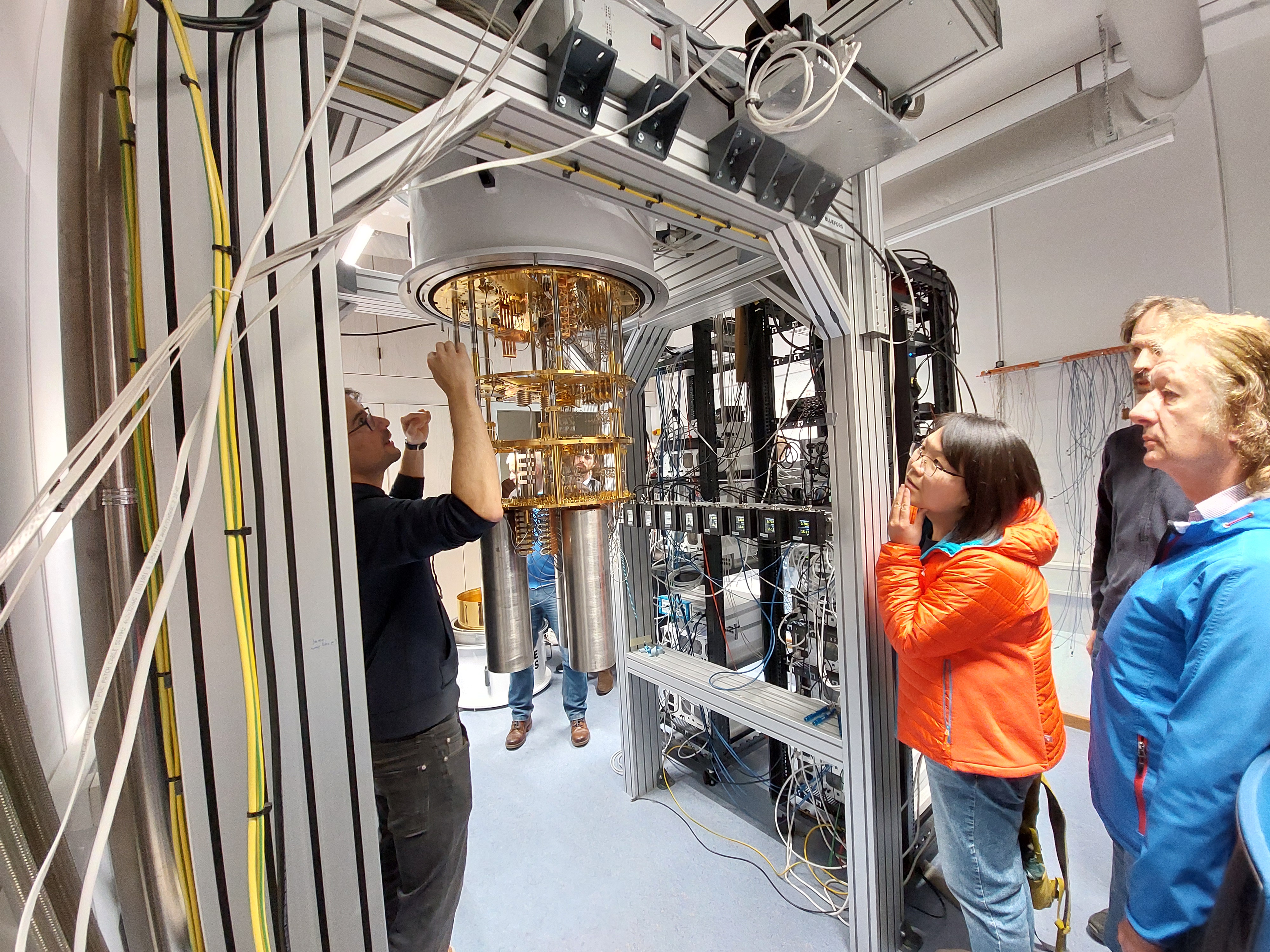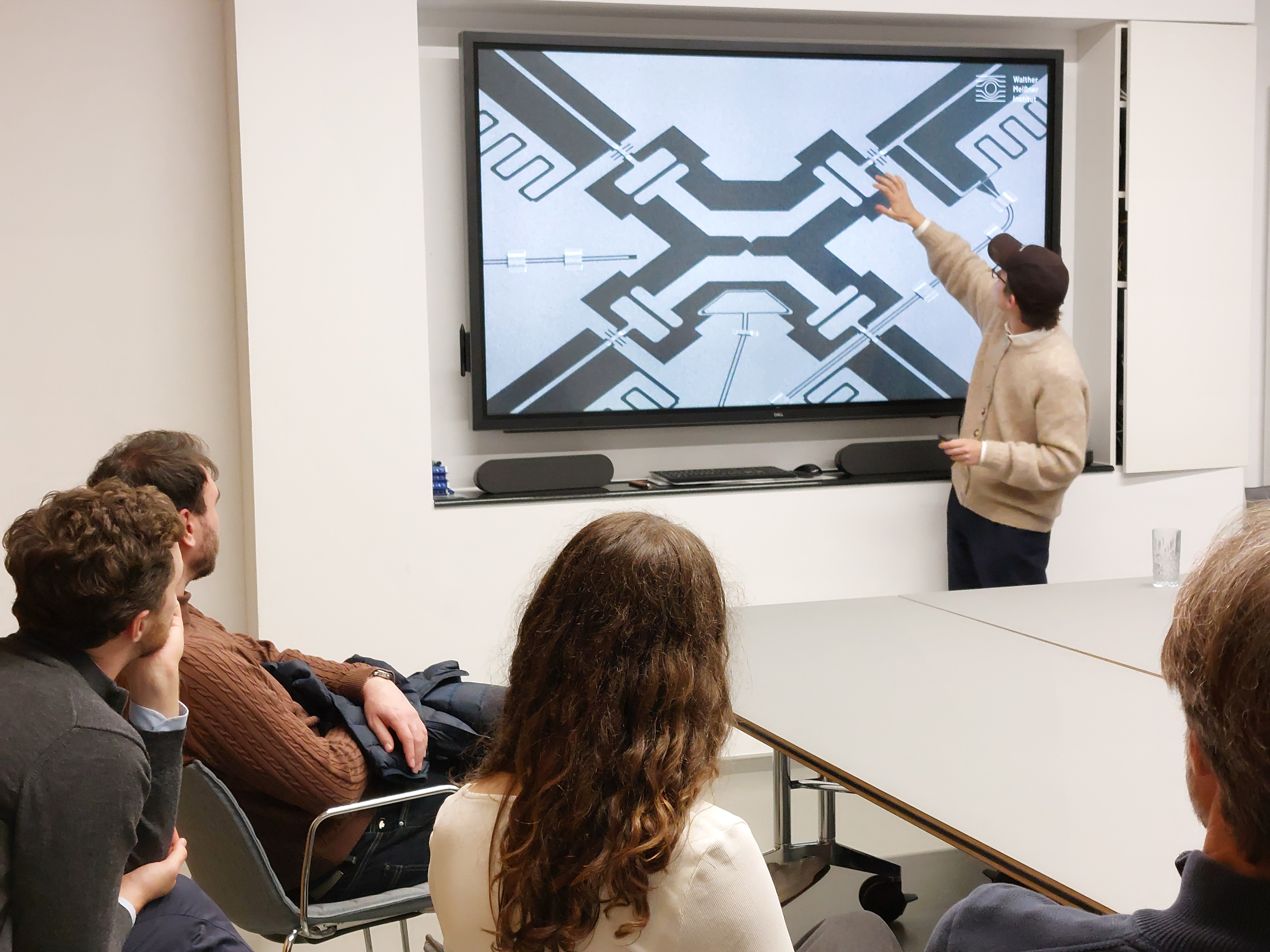On Monday evening, 47 visitors crowd into the seminar room at the Walther Meißner Institute (WMI). They want to learn more about the quantum research being conducted at this institute for low-temperature physics. Professor Peter Rabl, one of the directors of the WMI, welcomes the diverse audience. After briefly introducing the history of the institute, he goes into more detail about the concept of low-temperature research: “What do we mean by that?” Most of us would consider a winter night with a temperature of minus ten degrees Celsius to be very cold. However, from the perspective of a low-temperature researcher, this is still very warm, Rabl begins his explanation and then works his way down the temperature scale to the boiling point of nitrogen, and further down to the temperature at which helium becomes liquid (approximately -269 °C). Only below that, at less than four degrees Celsius above absolute zero, does one enter the realm of low-temperature research. At a few hundredths of a degree above absolute zero, macroscopic quantum effects finally occur, which are being researched here at the WMI and used to develop new technologies.
During an extensive laboratory tour, the guests learn about specific technologies involved. Divided into four groups, they visit four different laboratories and work areas at the WMI.


